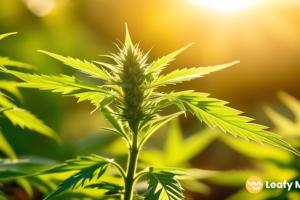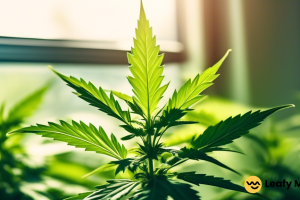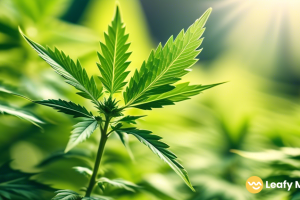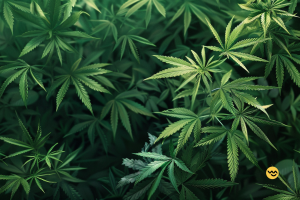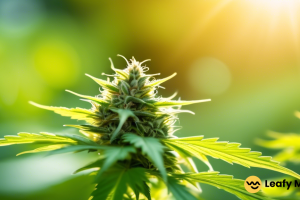The legal cannabis industry has recently been a hot political topic in America. With more states legalizing marijuana, at least on a medical scale, more companies are capitalizing on the market growth.
As for the numbers, legal cannabis sales exceeded 20 billion dollars in 2020, with a projected sales growth of 30 billion by 2025. That’s approximately sixty-seven percent more cannabis sales nationwide than pre-pandemic 2019. It’s an industry that’s growing at record speed in the U.S.
While we know that recreational cannabis sales are booming, there’s more to the growth. Cultivation and dispensary jobs are increasing as well. In 2020, market experts estimated that the marijuana industry employed around 250,000 people.
As more states legalize weed and begin to farm and sell it, the cannabis industry will create more jobs. It’s a money-making business from various angles and for all types of cannabis workers nationwide.
Marijuana legality in the United States
In the United States, marijuana is illegal on a federal level for recreational and medical use. According to the Controlled Substances Act, cannabis is listed as a “Schedule I” controlled substance, meaning it has a high potential for abuse and no significant medicinal benefits. However, the Department of Justice has agreed not to interfere with any State Supreme Court that decides to legalize it, as long as there are regulations.
The 2018 United States Farm Bill has legalized hemp and any cannabis plant containing less than 0.3% THC. Hemp oil and CBD oil are products manufactured from extracts of industrial hemp.
According to federal law, hemp products containing less than 0.3% delta-9-THC are not scheduled or considered illegal; however, marijuana use and cultivation are still federally prohibited, so check your local laws for more information.
Types of weed legalization
Since Colorado legalized marijuana in 2012, more and more states are decriminalizing marijuana at the very least. Some states legalize marijuana medically, while others have also legalized recreational marijuana use.
The vast range of recreational and medical marijuana laws in illegal and legal marijuana states makes for an uphill legal battle for dispensaries and cannabis cultivators.
It can be challenging to have your company insured since weed is technically still federally illegal. This has recently prompted cannabusiness owners to invest in security technology programs that can offer protection against theft and miscellaneous issues.
These are the standard categories of drug and cannabis policy reform:

Marijuana
Prohibition
Criminal consequences for the medical and recreational use or possession of cannabis, on any level

Decriminalization
The abolishment of specific criminal penalties for marijuana use or possession, often replacing minor criminal penalties with civil fines.

Medical
Legalization
Medical marijuana laws vary significantly from state to state. These laws usually range from using low THC products and removing criminal penalties for Medical cannabis patient cardholders to states that have legalized medical marijuana and established retail licensing and testing regulations.

Recreational
Legalization
Full legalization typically involves updating state law and that particular state’s Controlled Substances Act, adding legal cultivation, distribution, testing, sales, and delivery regulations.
Decriminalized States
There aren’t many states left that still consider cannabis entirely illegal. Many states, such as Tennessee, have legalized delta-8 and hemp sales but haven’t budged on legalizing marijuana for medical or recreational use. Some states haven’t decriminalized or legalized hemp-related or cannabis products, such as Kentucky, Kansas, Nebraska, and Idaho. However, people are actively fighting for reform and legislative updates in these states, so possible changes will come soon.
Medically Legal States
Thirty-seven states with current legislation allow partial or complete medical use. Some of these states have also decriminalized it; some have not. The ones that have been legalized add dispensaries at an impressively fast rate. So if you’re in a medically legal state, you’re likely to find a dispensary or office close to your area that offers medical marijuana cards.
Legal Adult-Use States
Nineteen states, plus the District of Columbia and Guam, have fully legalized and decriminalized marijuana for recreational adult use. These progressive states collectively have over 1,600 dispensaries and growing nationwide.
Your cannabis AI assistant
Tailored recommendations for your favorite
Sign up below for early access
*By signing up, you agree to the Terms and Conditions and Privacy Policy.
California residents, see our CA Privacy Notice.
- Recreational
- Medical
- Decriminalized
- Illegal
| State | Legalization Status | Adult Use | Medical Marijuana | Decriminalized |
|---|---|---|---|---|
Alabama | Medical | No | Yes | Some Areas |
Alaska | Fully Legal | Yes | Yes | Yes |
Arizona | Fully Legal | Yes | Yes | Yes |
Arkansas | Medical | Yes | No | No |
California | Fully Legal | Yes | Yes | Yes |
Colorado | Fully Legal | Yes | Yes | Yes |
Connecticut | Fully Legal | Yes | Yes | Yes |
Delaware | Decriminalized & Medical | No | Yes | Yes |
Florida | Medical | No | Yes | Some Areas |
Georgia | Medical | No | Yes | Some Areas |
Hawaii | Decriminalized & Medical | No | Yes | Yes |
Idaho | Illegal | No | No | No |
Illinois | Fully Legal | Yes | Yes | Yes |
Indiana | Illegal | No | No | No |
Iowa | Medical | No | Yes | No |
Kansas | Illegal | No | No | No |
Kentucky | Illegal | No | No | No |
Louisiana | Decriminalized & Medical | No | Yes | Yes |
Maine | Fully Legal | Yes | Yes | Yes |
Maryland | Decriminalized & Medical | No | No | Yes |
Massachusetts | Fully Legal | Yes | Yes | Yes |
Michigan | Fully Legal | Yes | Yes | Yes |
Minnesota | Decriminalized & Medical | No | Yes | Yes |
Mississippi | Medical | No | Yes | No |
Missouri | Decriminalized & Medical | No | Yes | Yes |
Montana | Fully Legal | Yes | Yes | Yes |
Nebraska | Illegal | No | No | No |
Nevada | Fully Legal | Yes | Yes | Yes |
New Hampshire | Decriminalized & Medical | No | Yes | Yes |
New Jersey | Fully Legal | Yes | Yes | Yes |
New Mexico | Fully Legal | Yes | Yes | Yes |
New York | Fully Legal | Yes | Yes | Yes |
North Carolina | Illegal | No | No | No |
North Dakota | Decriminalized & Medical | No | Yes | Yes |
Ohio | Decriminalized & Medical | No | Yes | Yes |
Oklahoma | Medical | No | Yes | Some Areas |
Oregon | Fully Legal | Yes | Yes | Yes |
Pennsylvania | Medical | No | Yes | Some Areas |
Rhode Island | Decriminalized & Medical | No | Yes | Yes |
South Carolina | Illegal | No | No | No |
South Dakota | Medical | No | Yes | Some Areas |
Tennessee | Illegal | No | No | No |
Texas | Medical | No | Yes | Some Areas |
Utah | Medical | No | Yes | No |
Vermont | Fully Legal | Yes | Yes | Yes |
Virginia | Fully Legal | Yes | Yes | Yes |
Washington | Fully Legal | Yes | Yes | Yes |
Washington, DC | Fully Legal | Yes | Yes | Yes |
West Virginia | Medical | No | Yes | No |
Wisconsin | Illegal | No | No | No |
Wyoming | Illegal | No | No | No |
The U.S. Cannabis Legalization Efforts- Timeline
The 1600s: Hemp cultivation was widely utilized to make clothing, rope, and ship sails. In 1619, the Virginia Assembly passed legislation requiring all farmers to grow hemp, and a few states even legally traded hemp.
1840: Marijuana became widely approved in mainstream medicine and was sold in over-the-counter medications.
1850: The U.S. Pharmacopeia added marijuana to its’ list. Healthcare providers use it to treat opioid withdrawal, chronic pain, appetite loss, and nausea.
1906: The Food and Drug Act demanded that all cannabis products state this on their labeling.
1900-1930: People used marijuana in the mainstream medical community for health benefits for years. However, that changed as it became associated with Mexican immigrants. Due to their recreational drug use, anti-drug advocates promoted fear and prejudice by labeling it the “Mexican Menace.”
1914-1925: A widespread prohibition effort encouraged twenty-six states to pass laws prohibiting cannabis.
The 1930s: The Great Depression resulted in an employment loss for thousands of Americans. Mainstream media began falsely reporting that marijuana use was linked to crime and violence. At the same Harry Anslinger started a campaign to criminalize marijuana, claiming that it led to psychosis. As a result of these combined efforts, by 1936, all states had introduced marijuana regulation laws.
1936: Reefer Madness debuted, showing marijuana as a drug that could lead to extreme violence and mental disorders.
1937: The Marijuana Tax Act was passed, restricting cannabis use to those who could afford a significant excise tax.
1942: The U.S. Pharmacopoeia removed marijuana from its’ list, and physicians began to discredit marijuana as having little to no medicinal use.
1952: The Boggs Act established significant penalties for marijuana offenses.
The 1960s: Marijuana gained popularity among college students, activists, hippies, and more. President Kennedy and Vice President Johnson detailed reports that found that marijuana was not a gateway drug, nor did it encourage violence.
1970: Congress approved the Controlled Substances Act, which placed marijuana as a Schedule I controlled substance. This law made it difficult to study marijuana for its’ medicinal benefits. However, Oregon, Maine, and Alaska still re-decriminalized marijuana.
1982: Nancy Reagan founded the “Just Say No” campaign.
1983: The Drug Abuse Resistance Education program was created, but the government later cut the DARE program’s funding as research proved inadequate for preventing youth from using drugs.
1986: President Reagan passed The Anti-Drug Abuse Act raising penalties for marijuana use.
1989: President George H.W. Bush campaigned for a “New War on Drugs.”
1996: California approved Prop 215, legalizing cannabis for medicinal use at the state level.
The 2000s: Thirty-six states plus the District of Columbia have legalized or decriminalized weed. Many states allow the cultivation of marijuana plants, typically up to six plants per household. It is still federally illegal; however, marijuana advocates are fighting hard to pass legalization bills and rally around a ballot initiative for adult use.
Common Medical Marijuana Conditions
While medical marijuana does not technically cure any disease or condition, it can undoubtedly help with certain conditions.
Some well-known symptoms that medical marijuana can help with include insomnia, nausea/appetite loss, tremors, seizures, anxiety, depression, and chronic pain.
Over the years, numerous jurisdictions have allowed the distribution of marijuana or marijuana extracts to patients suffering from various medical illnesses.
Who Gets Prescribed Medical Marijuana?
Getting your medical marijuana card can be relatively straightforward; we recommend using a service like Leafy DOC to assist you. Health research has come a long way to confirm that medical cannabis is effective for several conditions. Many healthcare providers and knowledgeable dispensary workers can help guide you.
Alzheimer’s disease
Research for the use of cannabis in the treatment of Alzheimer’s disease is still ongoing. Typically, it’s used for mood and anxiety or to treat agitation and aggression in some patients. While there is currently no known cure for Alzheimer’s, researchers hope that the use of cannabis can continue to at least manage some of the many symptoms of Alzheimer’s.
In addition, high levels of THC may not be beneficial for those with severe forms or already having difficulty with memory and recall, so it must be administered cautiously.
Amyotrophic lateral sclerosis (ALS)
While ALS is another devastating disease with no current cure, physicians see medical marijuana as a means of increasing an ALS patient’s quality of life. Significant symptoms of ALS include muscle spasms and shaking, which can be subdued by the effects of marijuana.
ALS patients sometimes also suffer chronic pain, which can be relieved by cannabinoids like CBD. According to the Journal of Addiction Medicine, some patients prefer CBD over traditional painkillers because those painkillers may cause damage to the liver and often are debilitatingly addictive.
HIV/AIDS
HIV/AIDS, like other chronic conditions, comes with nausea and appetite loss. It can sometimes inflict neuropathic pain, which is why medical cannabis is prescribed for HIV/AIDS patients. This is especially useful because HIV/AIDS can cause chronic weight loss, also known as wasting.
So while CBD helps with pain relief, THC has been shown to stimulate the appetite. At the same time, THC in marijuana can disorientate newcomers to the effects of the medicine.
It’s important to note that smoking cannabis or intaking any foreign particulates into the lungs is a risk to anyone with a compromised immune system. This explains why many HIV/AIDS patients elect for edible cannabis or topical solutions.
Crohn’s disease
While medical marijuana has not been shown to reduce inflammation or reduce disease activity of Crohn’s disease, it’s been shown to reduce (you guessed it) nausea and appetite loss. Scientists must do more research about medical marijuana and Crohn’s, but for the time being, patients seem to utilize the medicine to help them eat.
Epilepsy and seizures
Strains rich in CBD, rather than THC, appear to do wonders for those with epilepsy and seizures. Epidiolex, a purified version of CBD, was approved by the food and drug administration (FDA) in 2018 to treat patients with Dravet syndrome and Lennox-Gastaut syndrome.
These conditions are both rare and cause early-onset epilepsy in children. Some of these even cause treatment-resistant epilepsy, which has stumped physicians for years. However, studies have shown that Epidiolex reduced seizures by almost 50%, which is extremely promising for those suffering from these disorders, especially severe forms.
Glaucoma
Glaucoma is not one but a series of eye conditions due to nerve damage from increased pressure called intraocular pressure. While cannabis may reduce pressure caused by glaucoma, keeping up with the pain is challenging since the pressure can occur 24/7.
This means that high levels of both THC and CBD would need to be ingested to keep up with symptoms. At this rate, cannabis may do more harm than good, especially for other body parts, such as the lungs, if constantly smoked.
So while THC-rich cannabis may temporarily reduce eye pressure, it would not be the most suitable treatment for those with chronic and constant symptoms.
Multiple sclerosis and muscle spasms
Like seizure disorders and ALS, multiple sclerosis (M.S.) can cause debilitating muscle spasms and shakes all over the body. Cannabis can reduce these spasms or stiffness, at least anecdotally, in patients that already use medical marijuana. Generally, results are mixed across the board to treat M.S.’s symptoms, and there is currently no FDA-approved treatment.
Mainly, more evidence-based testing occurs with methods like topical solutions rather than ingested or smoked with multiple sclerosis. Hopefully, more research on medical marijuana can help identify compounds or chemicals that may alleviate symptoms of this complex disease.
Post-traumatic stress disorder
PTSD is a chronic condition that can cause nightmares, panic attacks, insomnia, and intensely self-destructive behavior. Medical marijuana use can work incredibly effectively as a nighttime aid since it’s anecdotally known to prevent intense dreams and nightmares.
Researchers have also found that THC reduces activity in the part of the brain that deals with perceived dangers. Accepted medical use of cannabis has become prevalent among veterans due to the opioid epidemic.
Chronic pain
Of all the conditions that people suffer from, medical cannabis is most popular among those with severe and chronic pain. Surveys have shown excellent efficacy in treating chronic pain with medical cannabis and are especially lauded as an alternative to other drugs from the opiate family.
This is because some painkillers are designed to manage short-term pain and can be highly addictive. Patients have found that constant use of marijuana, while not always recommended, is preferred to continuous usage of opiates or more aggressive pain medication.
Many patients also preferred smoking cannabis for chronic pain instead of topicals or edibles. The more local the pain, the better topicals seem to work. If not localized and the pain is more general, smoking or vaping cannabis may be the better route. In addition, smoking or vaping can spur a quicker onset in absorption, meaning faster results.
Cancer treatment
According to the National Cancer Institute, cancer chemotherapy, like other intense treatments, can cause significant nausea and vomiting. But appetite improvement and anti-nausea benefits are not all that can be gleaned from medical marijuana. Patients also use smoked cannabis for pain management and neuropathy from cancer treatments.
However, most medical cannabis and cancer studies revolve around orally ingested CBD. More research will be done into THC-packed strains and their effects on cancer chemotherapy patients. As for nausea and vomiting, it’s been proven time and time again that medical cannabis helps.
Learn more about marijuana legalization in the U.S.
Below we have included additional resources, including news and activism websites, for marijuana policy and legalization efforts in the United States.







